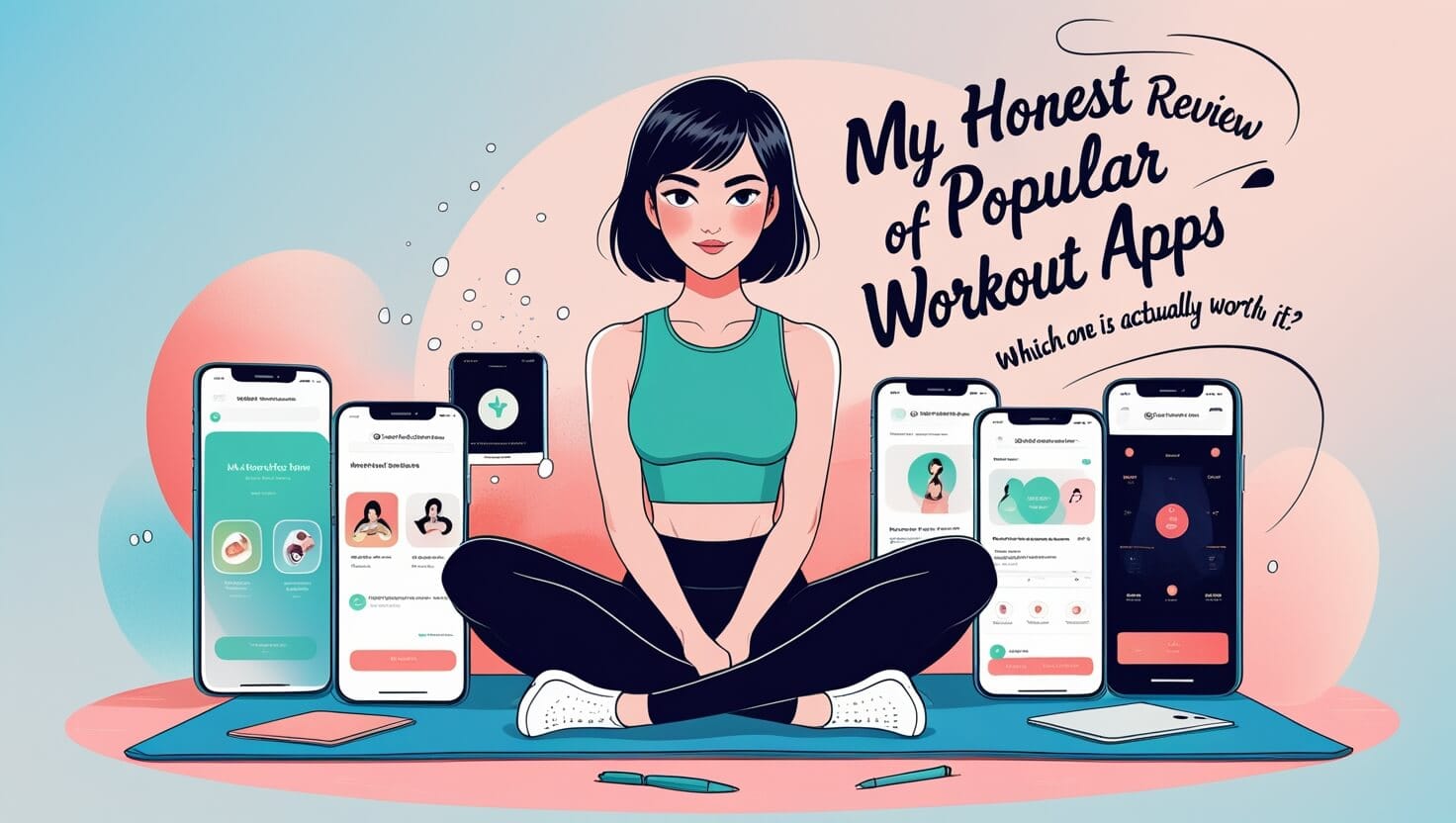
You know that sinking feeling when you check your bank account and wonder where all your money went? I’ve been there more times than I care to admit. About five years ago, I was living paycheck to paycheck despite having what most people would consider a decent income. The stress was eating me alive! That’s when I realized that learning how to save money isn’t just about having more cash in the bank – it’s about creating a life with less financial anxiety and more freedom to do what matters most.
Here’s the thing that shocked me: Americans spend an average of 11.2% of their income on food alone, according to the USDA, yet most people have no idea where their money actually goes each month. I was definitely one of those people. The turning point came when I discovered that saving money doesn’t have to be complicated or feel like punishment. In fact, the best money-saving strategies are often the simplest ones that you can stick to long-term.
In this comprehensive guide, I’ll share everything I’ve learned about how to save money in ways that actually work in real life. We’ll explore practical strategies that won’t make you feel deprived, discover helpful apps that can automate your savings, and create a system that reduces financial stress rather than adding to it. Whether you’re just starting your money-saving journey or looking to optimize your current approach, these proven methods will help you build a more secure financial future while keeping your sanity intact.
Essential Money-Saving Apps That Actually Work
After testing dozens of financial apps over the years, I’ve found that the best ones are those that integrate seamlessly into your existing habits rather than requiring you to completely change how you manage money. The app market is flooded with options, but I’ll share the ones that have consistently helped me and thousands of others successfully save money without adding complexity to daily life.
Mint

Mint has been my go-to budgeting app for over three years now, and it’s completely free. What I love about Mint is that it automatically categorizes your transactions and gives you a clear picture of where your money goes each month. The app connects to your bank accounts, credit cards, and investment accounts, providing a comprehensive view of your financial situation in one place. The real value comes from the spending insights and personalized tips it provides. For example, Mint showed me that I was spending $180 per month on subscription services I’d forgotten about – money that now goes directly into my emergency fund.
YNAB (You Need A Budget)

YNAB is worth the monthly subscription fee if you’re serious about taking control of your finances. This app operates on the principle of giving every dollar a job before you spend it. While it has a learning curve, YNAB users report saving an average of $600 in their first two months and $6,000 in their first year. The app forces you to be intentional about your spending and helps break the paycheck-to-paycheck cycle by encouraging you to live on money that’s at least a month old.
For those who struggle with the “set it and forget it” approach to saving,
Acorns

Acorns makes the process completely painless. This app rounds up your purchases to the nearest dollar and invests the spare change in diversified portfolios. I was skeptical at first – how much could pocket change really add up to? After 18 months of using Acorns without changing any spending habits, I had accumulated over $800 in my investment account. The app also offers educational content about investing, which has helped me become more confident about growing my wealth beyond just saving.
PocketGuard

PocketGuard is perfect for people who want simple answers to the question “Can I afford this?” The app analyzes your income, bills, and savings goals to tell you how much money you have available for discretionary spending. This real-time awareness has prevented me from making impulse purchases countless times. The app’s “In My Pocket” feature shows you exactly how much you can spend after accounting for bills and savings goals, taking the guesswork out of everyday spending decisions.
Practical tips for using money-saving apps effectively:
- Start with one app and use it consistently for at least a month before adding others
- Set up notifications for spending alerts and savings milestones
- Review your app data weekly to identify spending patterns and opportunities
- Use apps that integrate with your existing bank accounts for accurate tracking
- Don’t rely solely on apps – combine them with conscious spending decisions
Smart Shopping Strategies to Maximize Your Savings

Learning how to save money while shopping doesn’t mean living like a monk or clipping every coupon in existence. Some of the most effective money-saving strategies are actually quite simple and can be implemented without dramatically changing your lifestyle. Over the years, I’ve developed a systematic approach to shopping that consistently saves me 20-30% on everything from groceries to clothing, without spending hours hunting for deals.
The single most impactful change I made was implementing a 24-hour rule for any non-essential purchase over $50. This simple delay has prevented countless impulse purchases and given me time to research better options or realize I didn’t really need the item at all. For larger purchases over $200, I extend this to a full week. You’d be amazed how often something that felt urgent on Tuesday feels completely unnecessary by the following Tuesday.
Grocery shopping is where most people can find immediate savings with just a few strategic changes. I’ve found that shopping with a detailed list based on planned meals reduces my grocery bill by about 25% compared to wandering the aisles and buying whatever looks good. I also discovered that shopping at off-peak times – like Tuesday mornings or Sunday evenings – often means access to better sale items and markdown sections that get picked over during busy periods.
One strategy that’s saved me thousands over the years is becoming a strategic stockpiler. When items I regularly use go on sale at genuinely good prices (30% off or more), I buy enough to last until the next likely sale cycle. This works particularly well for non-perishables like toiletries, cleaning supplies, and pantry staples. The key is having the storage space and discipline to only stockpile items you know you’ll use, not just anything that’s on sale.
The rise of cashback apps and browser extensions has made saving money while shopping almost effortless. Beyond Honey, which I mentioned earlier, I regularly use Rakuten for online purchases and Ibotta for grocery shopping. Rakuten offers cashback percentages at thousands of online retailers, and I’ve earned over $300 in cashback in the past year just by clicking through their website before making purchases I was already planning to make. Ibotta works similarly for groceries and has earned me an additional $150 in cashback just for scanning receipts.
Price comparison has become incredibly easy with smartphone apps. Flipp allows you to search for specific items across multiple store flyers in your area, while Honey and InvisibleHand automatically compare prices across different websites when shopping online. I’ve found price differences of 20-40% for identical items just by taking 30 seconds to compare options.
Proven shopping strategies that work:
- Implement waiting periods before making non-essential purchases
- Shop with detailed lists based on meal planning and actual needs
- Use cashback apps and browser extensions for purchases you’re already making
- Compare prices across multiple stores before buying anything over $25
- Stock up strategically when regularly-used items go on genuine sale
- Shop during off-peak times for better selection of clearance items
- Set price alerts for items you need but aren’t urgent
- Buy generic or store brands for items where quality differences are minimal
Transportation Savings: Beyond Just Gas Prices

Transportation costs are typically the second-largest expense in most household budgets after housing, yet it’s an area where people often feel they have limited options for savings. Through trial and error, I’ve discovered that there are actually numerous ways to reduce transportation expenses without dramatically changing your lifestyle or mobility.
The most obvious place to start is with your vehicle expenses if you own a car. Regular maintenance might seem like an additional expense, but it prevents much more costly repairs down the road. I learned this lesson the hard way when neglecting a $200 maintenance service resulted in a $1,200 repair bill six months later. Now I follow the manufacturer’s maintenance schedule religiously and have found a reliable independent mechanic who charges about 30% less than the dealership for routine services.
Fuel efficiency improvements can add up to significant savings over time. Simple changes like keeping tires properly inflated, removing excess weight from the car, and combining errands into single trips have improved my gas mileage by about 15%.
GasBuddy

Use GasBuddy to find the cheapest gas stations along my regular routes. While the per-gallon savings might only be 5-10 cents, over the course of a year this adds up to $50-100 in savings.
Insurance optimization is one of the easiest ways to reduce transportation costs. I shop for auto insurance quotes annually and have consistently found savings of 10-25% by switching companies or adjusting coverage levels. The key is comparing identical coverage levels across multiple providers and being honest about your actual driving habits. I increased my deductible from $500 to $1,000 and saved $200 annually – money I put toward building my emergency fund that would cover the higher deductible if needed.
For those in urban areas, alternative transportation options can provide substantial savings. I calculated that my car was costing me about $8,500 per year when I factored in payments, insurance, maintenance, fuel, and parking. For comparison, unlimited public transit in my city costs $1,200 annually, and ride-sharing services for occasional longer trips add maybe another $800 per year. Even with some inconvenience, the $6,500 annual savings was too significant to ignore.
Car sharing services like Zipcar and Turo have become viable options for people who need a car occasionally but don’t want the full expense of ownership. I have several friends who use this approach successfully, especially those who work from home or live in walkable neighborhoods. The key is honestly assessing how often you actually need a car versus wanting the convenience of having one always available.
Even if you need to maintain car ownership, there are opportunities to offset some costs. I rent out my car through Turo when I’m traveling or know I won’t need it for several days. This has generated about $1,500 in additional income over the past year, which more than covers my insurance and maintenance costs. Obviously, this approach isn’t for everyone, but it’s worth considering if you have a reliable vehicle and don’t mind the occasional inconvenience.
Transportation cost reduction strategies:
- Maintain your vehicle regularly to prevent expensive repairs
- Shop for auto insurance annually and adjust coverage appropriately
- Use apps to find cheapest gas stations and improve fuel efficiency
- Consider alternative transportation options like public transit or car sharing
- Combine errands and trips to reduce overall driving
- Explore car rental income opportunities if you have a reliable vehicle
- Walk or bike for short trips when weather and safety permit
- Negotiate parking costs if you pay for workplace or residential parking
Your Money Mindset: The Foundation of How to Save Money
Before diving into specific tactics, I had to confront some uncomfortable truths about my relationship with money. For years, I thought I was “bad with money” simply because I couldn’t seem to save consistently. What I discovered is that most people struggle with saving not because they lack willpower, but because they haven’t addressed the underlying beliefs and habits that drive their spending decisions.
The first step in learning how to save money effectively is understanding your money triggers. I started tracking not just what I spent, but how I felt when I spent it. Was I stressed? Bored? Celebrating? This awareness was eye-opening. I realized that about 40% of my unnecessary purchases happened when I was feeling anxious about work. Online shopping had become my go-to stress relief, which was creating more stress in the long run – talk about ironic!
One of the most powerful shifts in my money mindset came from reframing saving from restriction to empowerment. Instead of thinking “I can’t afford this,” I started asking “What do I really want this money to do for me?” This simple question helped me align my spending with my actual values rather than my impulses. When you understand that every dollar saved is a dollar working toward your future freedom, the motivation to save becomes much stronger than the urge to spend on things that don’t truly matter.
Another crucial realization was that perfectionism was sabotaging my savings efforts. I used to think that if I couldn’t save a significant amount each month, there was no point in saving at all. This all-or-nothing thinking kept me stuck in cycles of good intentions followed by complete abandonment of my savings goals. Learning to celebrate small wins and progress over perfection transformed my relationship with money completely.
The Power of Automation: Set It and Forget It Savings
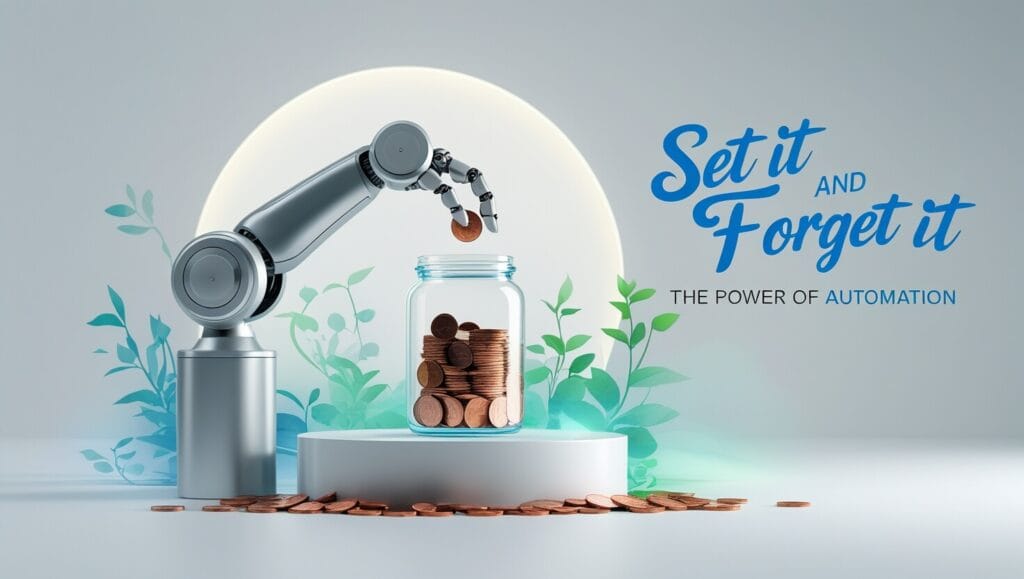
Let me tell you about the game-changer that revolutionized how to save money in my household: automation. I used to rely on willpower alone to transfer money to savings each month, which worked about as well as you’d expect. Some months I’d remember, other months I’d convince myself I needed that money for something else. The inconsistency was frustrating and kept me from building any real momentum.
The solution was ridiculously simple once I implemented it. I set up automatic transfers from my checking account to my savings account for the day after each payday. The key was starting small – just $50 per paycheck – so it didn’t feel overwhelming. What surprised me was how quickly I stopped missing that money. Within three months, I had saved more than I had in the entire previous year, and it felt effortless.
But here’s where it gets interesting: I didn’t stop at basic automatic transfers. I discovered that modern banking apps and financial tools offer incredibly sophisticated automation options that can supercharge your savings without requiring any ongoing effort from you. Many banks now offer “round-up” programs where they automatically round up your purchases to the nearest dollar and transfer the change to savings. It might seem like small change, but those little amounts add up faster than you’d think.
The psychological benefit of automation cannot be overstated. When saving happens automatically, you remove the daily decision fatigue around whether or not to save. You’re essentially paying your future self first, before you have a chance to spend that money on less important things. This approach has helped me consistently save even during months when unexpected expenses popped up, because the savings had already been set aside before I could even consider using it for something else.
Key automation strategies that work:
- Set up automatic transfers on payday, even if it’s just $25 to start
- Use round-up programs to save spare change automatically
- Automate bill payments to avoid late fees that derail your budget
- Set up separate savings accounts for different goals with automatic funding
- Use payroll deduction for retirement contributions to save before you see the money
Creating a Realistic Budget That You’ll Actually Follow
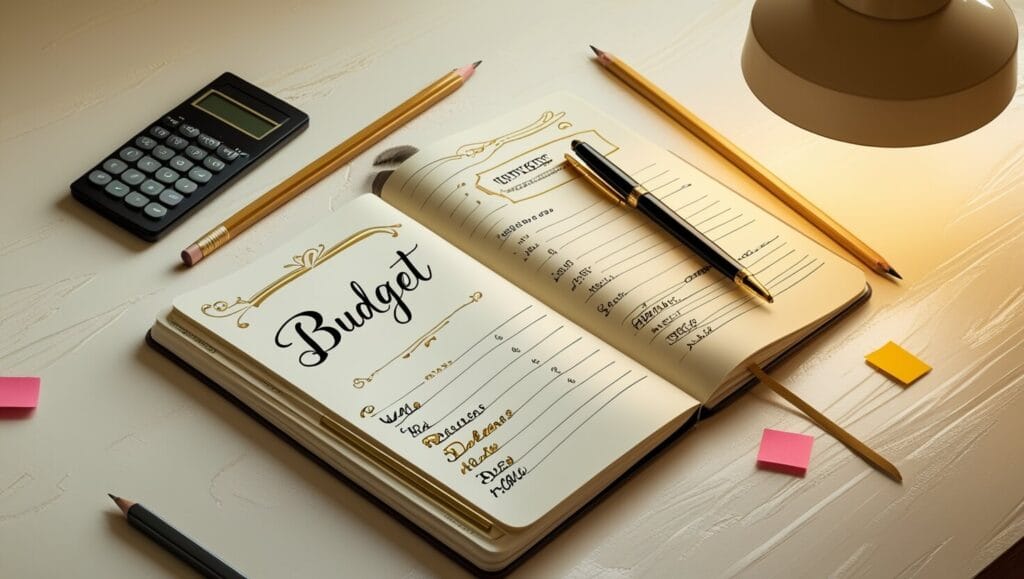
I’ve created more budgets than I care to count, and most of them ended up as forgotten spreadsheets gathering digital dust. The problem wasn’t with budgeting itself – it was with my approach. I was trying to create perfect budgets that accounted for every penny and left no room for the realities of human behavior. Learning how to save money through budgeting became much easier once I embraced a more flexible, realistic approach.
The budget that finally stuck was built around my actual spending patterns rather than idealistic goals. I spent two months tracking every expense without trying to change anything, just to understand my baseline. This revealed some uncomfortable truths – like the fact that I was spending $400 per month on restaurants and takeout – but it also showed me areas where I was naturally frugal and could potentially cut back without much sacrifice.
My current budgeting approach follows the 50/30/20 rule as a starting framework, but with personalized adjustments based on my priorities and lifestyle. Fifty percent of my after-tax income goes to needs (housing, utilities, groceries, transportation), thirty percent to wants (entertainment, dining out, hobbies), and twenty percent to savings and debt repayment. However, I’ve modified this to 50/25/25 because I prioritized building my emergency fund and retirement savings over discretionary spending.
The key insight that changed everything was treating my budget as a spending plan rather than a restriction tool. Instead of focusing on what I couldn’t buy, I focused on consciously choosing how to spend my money in ways that aligned with my values and goals. This shift in perspective made budgeting feel empowering rather than limiting. I started asking questions like “Will this purchase bring me closer to or further from my goals?” and “Am I spending this money intentionally or just out of habit?”
One of the most effective strategies I’ve implemented is the “budget buffer” concept. Instead of budgeting every dollar down to the penny, I leave a small buffer in each category for unexpected expenses or opportunities. This prevents the all-or-nothing thinking that used to derail my budgets when I went over in any category. If I spend $20 more on groceries one week, it doesn’t mean my entire budget is ruined – it just comes out of my buffer.
Essential elements of a budget that works:
- Base spending amounts on actual data, not wishful thinking
- Include a category for “fun money” that you can spend guilt-free
- Build in buffers for unexpected expenses in each category
- Review and adjust monthly based on what’s actually happening
- Focus on the biggest expenses first – small optimizations come later
- Use percentages rather than fixed amounts to accommodate income changes
Reducing Monthly Expenses: The Big Wins
When people ask me how to save money quickly, I always start with monthly recurring expenses because that’s where you can often find the biggest impact with the least ongoing effort. A $20 reduction in a monthly bill saves you $240 per year, and unlike cutting back on daily coffee purchases, you only have to make the decision once.
My first target was always subscription services because they’re easy to forget about and add up quickly. I discovered I was paying for three different streaming services but only regularly using one, plus a gym membership I hadn’t used in six months, and two mobile apps I’d signed up for during free trials and forgotten to cancel. In one afternoon of reviewing my bank statements, I found $87 per month in subscriptions I could eliminate immediately. That’s over $1,000 per year back in my pocket.
The next biggest opportunity is usually in your major monthly bills: housing, transportation, insurance, and utilities. For housing, if you’re renting, the key is timing your lease renewal strategically and being prepared to negotiate. I saved $150 per month on my last lease renewal simply by researching comparable properties in my area and presenting that information to my landlord along with my history as a reliable tenant. If you own your home, refinancing might be an option if rates have dropped since you bought, and reassessing your property tax assessment can sometimes result in significant savings.
Car expenses offer multiple opportunities for savings. Insurance is the easiest place to start – shopping around for auto insurance annually can often save 15-25% on premiums. I saved $400 per year just by switching companies, with identical coverage. For those with car payments, refinancing auto loans can be worthwhile if your credit has improved since you originally financed. Transportation costs can also be reduced by combining errands into single trips, working from home when possible, and considering whether you actually need a car for every trip.
Utility bills might seem fixed, but there are often opportunities for reduction. Simple changes like programmable thermostats, LED light bulbs, and fixing air leaks can reduce electricity bills by 10-20%. In areas with deregulated energy markets, shopping for better electricity rates can result in significant savings. I saved $25 per month just by switching to a different energy provider – the process took about 15 minutes online.
One area where I found unexpected savings was in banking fees. I was paying $12 per month in checking account fees plus various ATM fees that added up to another $15-20 monthly. Switching to a credit union eliminated the checking account fees entirely, and their ATM network meant I rarely paid ATM fees anymore. Over the course of a year, this seemingly small change saved me over $350.
High-impact areas for reducing monthly expenses:
- Audit all subscription services and cancel unused ones
- Shop for better rates on insurance annually (auto, renters/homeowners, health)
- Negotiate with service providers (internet, phone, streaming services)
- Consider refinancing loans if rates have improved or your credit has strengthened
- Switch to fee-free banking options like credit unions or online banks
- Implement energy-saving measures to reduce utility bills
- Evaluate transportation costs and consider alternatives for some trips
- Review and optimize your phone plan based on actual usage patterns
Building an Emergency Fund Without Sacrificing Your Lifestyle
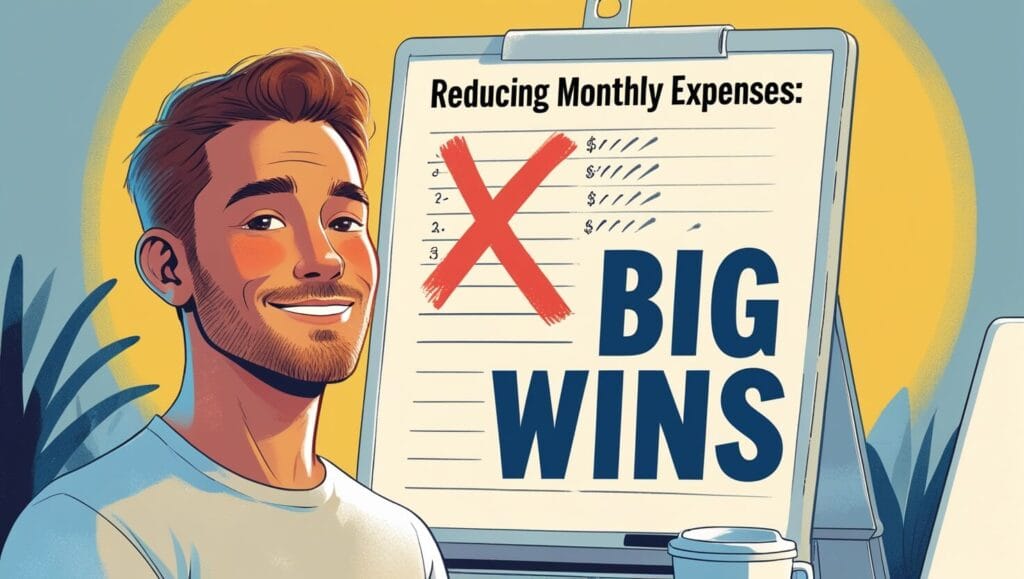
The thought of building an emergency fund used to stress me out more than not having one. Financial experts recommend 3-6 months of expenses saved, which felt impossible when I was already struggling to save anything consistently. The breakthrough came when I stopped thinking about emergency funds as a massive mountain to climb and started treating it as a series of small, achievable milestones.
My first goal wasn’t three months of expenses – it was $500. This amount would cover most minor emergencies like car repairs, medical copays, or appliance replacements without having to use credit cards. Reaching this first milestone took about four months of saving $125 per month, which felt manageable and gave me momentum to continue. The psychological benefit of having even this small buffer was enormous. I slept better knowing that a flat tire wouldn’t derail my entire budget.
The key to building an emergency fund without feeling deprived is finding money you won’t miss in your current lifestyle. I started with “found money” – things like tax refunds, work bonuses, cashback rewards, and money from selling items I no longer needed. This approach let me build my initial emergency fund without reducing my regular spending at all. Over six months, I accumulated nearly $800 just from these irregular income sources.
Once I had my initial $500 buffer, I implemented what I call the “stealth savings” approach. Instead of dramatically cutting my lifestyle, I made tiny adjustments that were barely noticeable day-to-day but added up significantly over time. I started making coffee at home three days per week instead of buying it daily (saving about $45 per month), brought lunch to work twice a week instead of buying it (saving about $60 per month), and used the library for entertainment instead of buying books or renting movies (saving about $25 per month). These small changes freed up $130 monthly for my emergency fund without making me feel like I was sacrificing anything important.
The automation strategy I mentioned earlier became crucial for emergency fund building. I set up a separate high-yield savings account specifically for emergencies and automated transfers to it. The key was making sure this account was accessible if needed but not so convenient that I’d be tempted to use it for non-emergencies. I chose an online bank that offered better interest rates than my regular bank but required a day or two to transfer money back to my checking account.
What surprised me most about building an emergency fund was how it actually improved my daily financial stress levels long before it was fully funded. Even having $1,000 set aside eliminated most of the anxiety I used to feel about unexpected expenses. This reduced stress actually made it easier to make good financial decisions in other areas, creating a positive feedback loop that accelerated my overall financial progress.
Effective strategies for painless emergency fund building:
- Start with a small, achievable goal like $500 rather than the full 3-6 months
- Use irregular income sources like tax refunds and bonuses for initial funding
- Make tiny lifestyle adjustments that free up $100-150 monthly
- Automate transfers to a separate, high-yield savings account
- Celebrate milestones along the way to maintain motivation
- Consider the emergency fund as insurance that pays dividends in reduced stress
- Focus on consistency over amount – $50 monthly is better than $200 occasionally
Meal Planning and Food Savings That Actually Taste Good
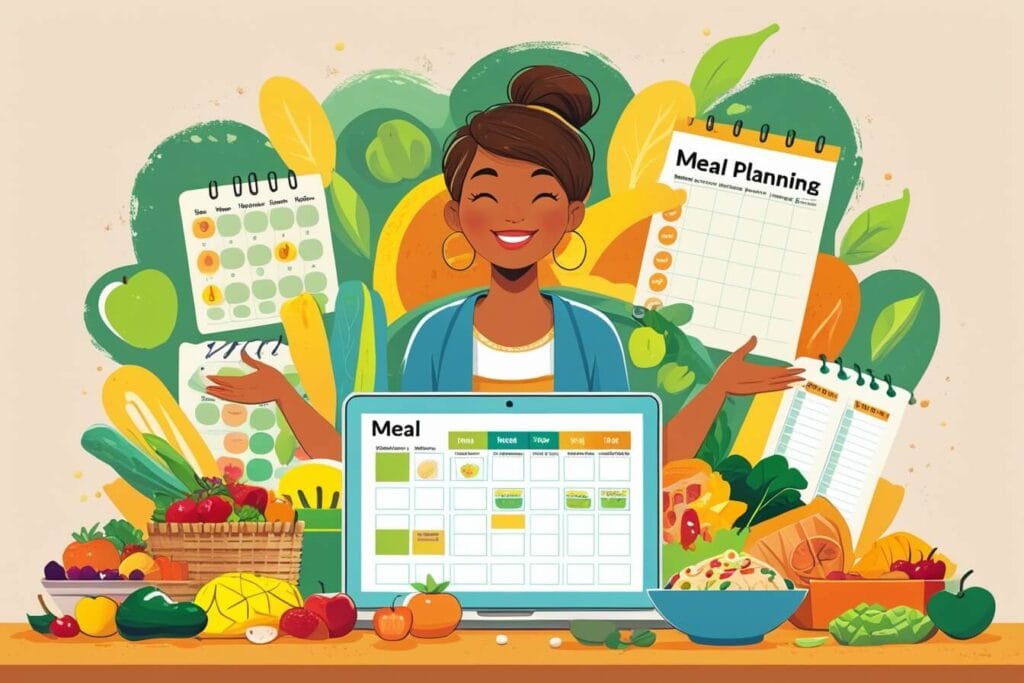
Food expenses were my biggest budget buster for years, and I’m not talking about fancy restaurant meals. I was spending a fortune on groceries that went bad before I could use them, plus frequent takeout orders when I hadn’t planned ahead. Learning how to save money on food without eating like a college student required a complete shift in how I approached meal planning and grocery shopping.
The game-changer was batch cooking and freezer meal prep. Every Sunday, I spend about two hours preparing base ingredients and complete meals that I can freeze and reheat throughout the week. This might sound time-consuming, but it actually saves me hours during busy weekdays and has reduced my food costs by about 40%. I make large batches of things like chili, curry, pasta sauce, and soup that freeze well and provide variety throughout the month.
My approach to meal planning focuses on flexibility rather than rigid menus. I plan around what’s on sale at my local grocery stores and what I already have in my pantry. I keep a running inventory of my freezer and pantry contents, which prevents me from buying duplicates and helps me use items before they expire. This system has virtually eliminated food waste in my kitchen, which was probably costing me $50-75 per month previously.
Shopping strategically has become second nature after years of refining my approach. I shop at three different stores depending on what I need: Aldi for staples and produce (their prices are consistently 20-30% lower than traditional grocery stores), Costco for bulk items and household supplies (but only for things I know I’ll use), and my regular grocery store for specific items and sale shopping. This might sound complicated, but I combine these trips efficiently and the savings are substantial.
One of my most effective strategies is cooking with less expensive cuts of meat and learning techniques that make them delicious. Slow cooker and instant pot meals using cheaper cuts like chicken thighs, pork shoulder, or beef chuck roast taste amazing and cost significantly less than premium cuts. I’ve also incorporated more plant-based proteins like beans, lentils, and eggs, which are nutritious, filling, and incredibly affordable.
The key insight that changed my relationship with food spending was realizing that eating well doesn’t have to be expensive, but it does require planning and basic cooking skills. I invested time in learning a few key techniques and building a collection of reliable recipes that use affordable ingredients. Now I eat better than I did when I was spending twice as much on food, and meal preparation has become enjoyable rather than stressful.
Practical food saving strategies that maintain quality:
- Batch cook base ingredients and complete meals for the freezer
- Plan meals around sale items and seasonal produce
- Keep inventory of pantry and freezer contents to prevent duplicate purchases
- Learn to cook with less expensive cuts of meat using slow cooking techniques
- Shop at multiple stores strategically based on their strengths
- Incorporate affordable plant-based proteins into regular rotation
- Grow herbs and simple vegetables if you have space (even windowsill gardens help)
- Use apps like Flipp to find the best prices on ingredients you need regularly
Your Path to Financial Peace and Simplified Money Management
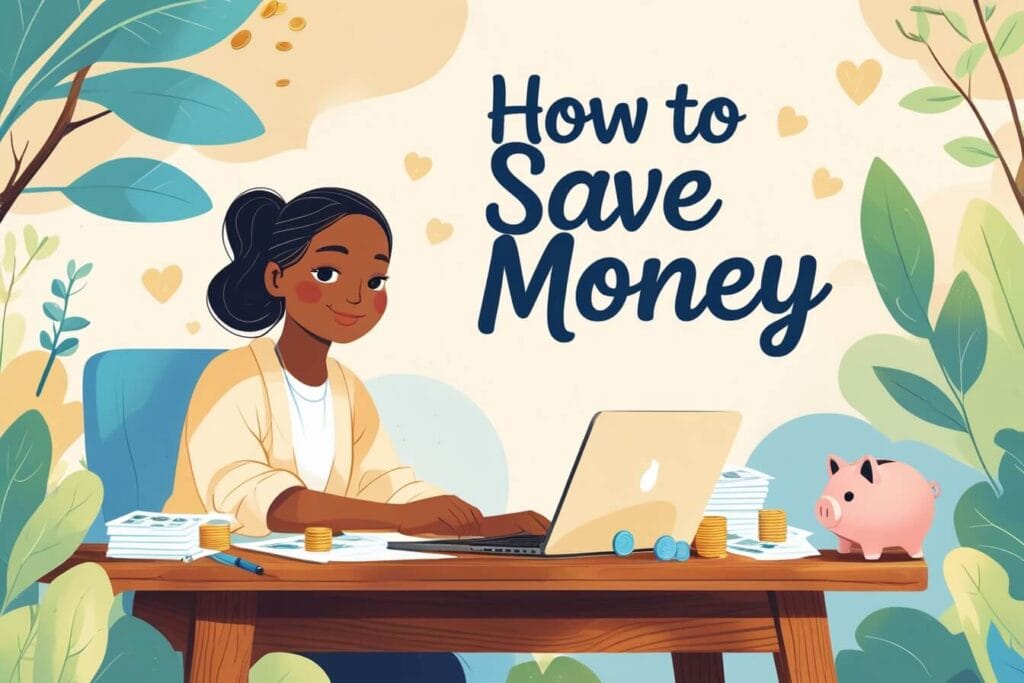
After years of struggling with money stress and trying countless savings strategies that didn’t stick, I can confidently say that learning how to save money effectively isn’t about perfect budgets or extreme frugality – it’s about creating systems that work with your personality and lifestyle rather than against them. The strategies I’ve shared in this guide have helped me transform my financial situation from living paycheck to paycheck to having a six-month emergency fund, contributing regularly to retirement, and sleeping peacefully without money worries keeping me awake.
The most important insight I’ve gained is that small, consistent actions compound into significant results over time. You don’t need to revolutionize your entire lifestyle overnight or deprive yourself of everything you enjoy. Instead, focus on making incremental improvements in the areas that offer the biggest impact with the least disruption to your daily life. Start with automating your savings, audit your monthly subscriptions, and implement one or two shopping strategies that feel manageable.
Remember that personal finance is exactly that – personal. What works perfectly for me might not fit your situation, and that’s completely normal. The key is to experiment with different approaches and adapt them to your unique circumstances, priorities, and goals. Some months you’ll save more than planned, other months you’ll save less, and occasionally you might not save anything at all due to unexpected expenses. This doesn’t mean you’ve failed – it means you’re human and dealing with real life.
The apps and tools I’ve recommended can certainly make the process easier, but they’re not magic solutions. They work best when combined with conscious decision-making and clear priorities about what matters most to you. Take time to clarify your financial goals and remind yourself regularly why you’re choosing to save money. Whether it’s reducing stress, building security, or creating opportunities for future experiences, keeping your “why” clear will help you stay motivated when temptation strikes.
Finally, celebrate your progress along the way. Every dollar saved, every subscription canceled, and every smart shopping decision is a step toward greater financial freedom and peace of mind. Building wealth and learning how to save money effectively is a marathon, not a sprint. Be patient with yourself, stay consistent with the strategies that work for you, and remember that the goal isn’t perfection – it’s progress toward a more secure and stress-free financial future.
Your money should work for you, not against you. With the right systems in place and a commitment to steady progress, you can absolutely achieve your savings goals while still enjoying your life today. Start with one strategy from this guide, implement it consistently for a month, then gradually add other techniques as they become habits. Before you know it, you’ll have transformed your relationship with money and built the financial security you’ve been working toward.


